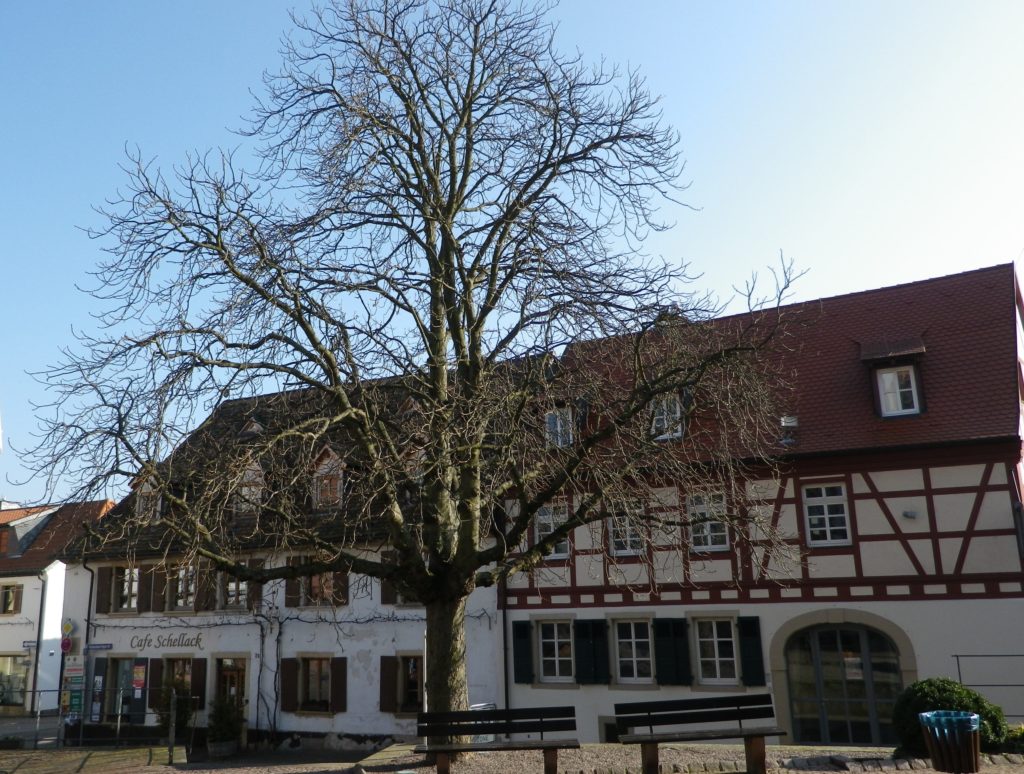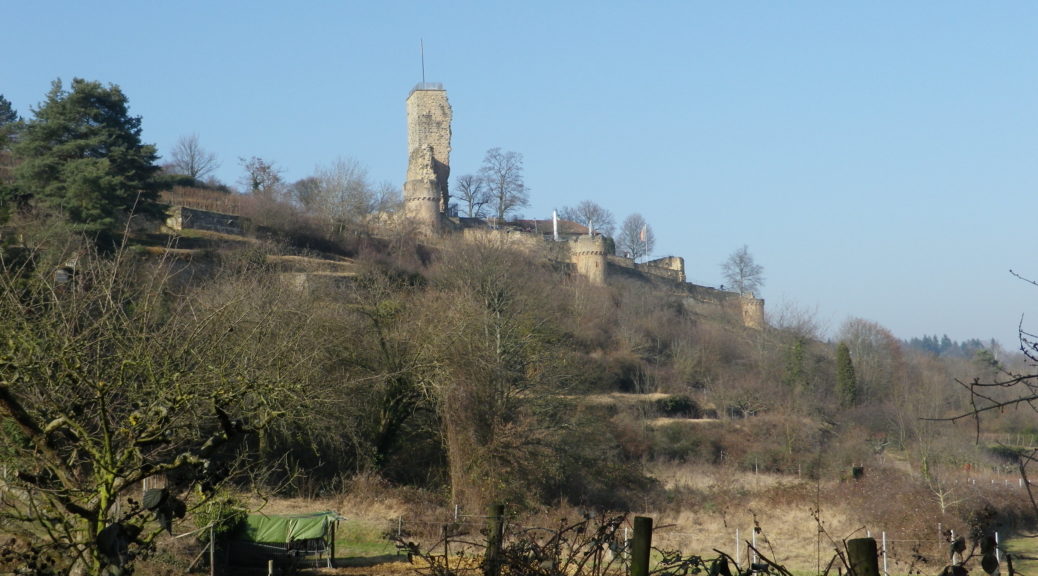If there is any grape that wine-lovers consider the quintessential grape of Germany, it is Riesling. German Riesling is unique, with fairly high natural acidity (that mellows nicely over time), a great fruity character, and yet generally speaking, a light and refreshing wine. So, coming across a hiking circuit trail in the Pfalz, by Wachenheim in the Mittelhaardt wine district, I decided to hike it, and experience some of the Rieslings from local producers.
This hike, like the wine, was unique and easy to do, with just enough elevation to get the heart going. Like the wine, it could be a fun trail to hike with friends on an early summer day, although I was there in winter, which was fine too. Being a circuit, one could begin anywhere, but I began at the north end of Wachenheim, so that I would have the climbs out of the way first, and the wine-tasting opportunities later.
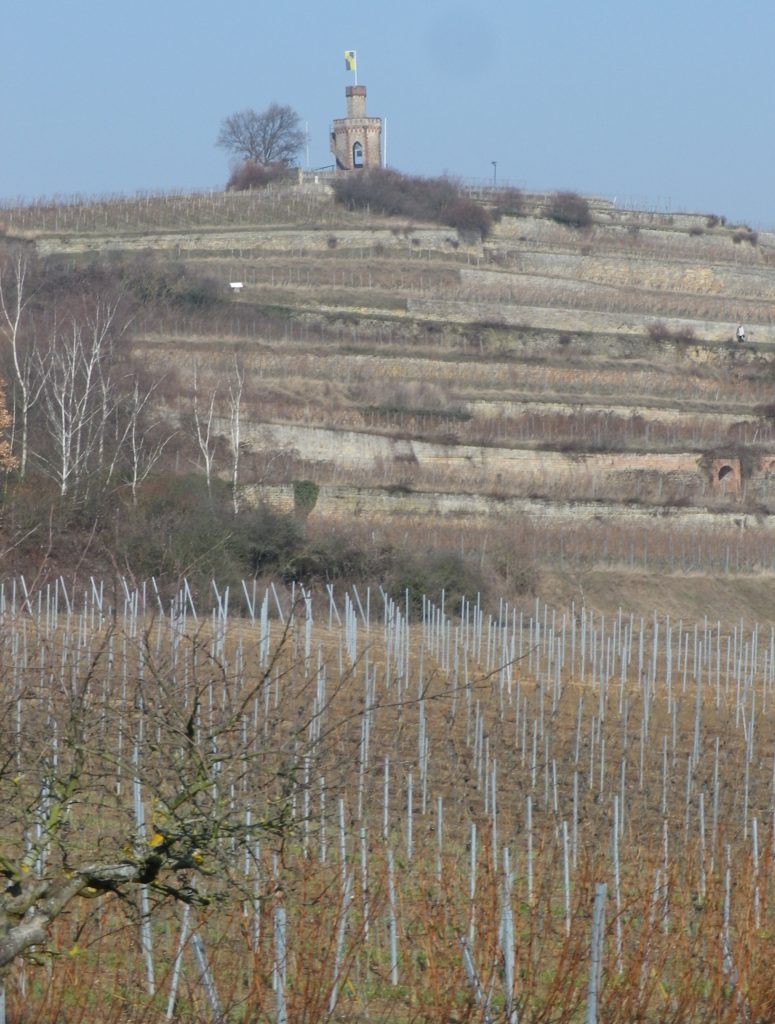
In between Wachenheim and Bad Duerkheim to the north, is a large area covered by vines, overlooked by the Flaggenturm (AKA: Kaffeemuehlchen) tower. While not terribly steep, the slopes in this area are covered with dirt trails, and people taking advantage of them. Later though, only the hardy souls attempted the stair-step climb to the Wachtenburg, the castle ruin rising high above Wachenheim. It is the high point, literally, of the hike, and about half-way through it. The high castle tower provides a great vantage point for views of the entire area, north, south and across the Rhine River valley to Wuerttemberg. Characteristically, this castle had a small tavern. (Sadly, and also quite characteristic, the tavern was closed until Spring, as are many similar taverns in the woods or on hilltops in Germany).
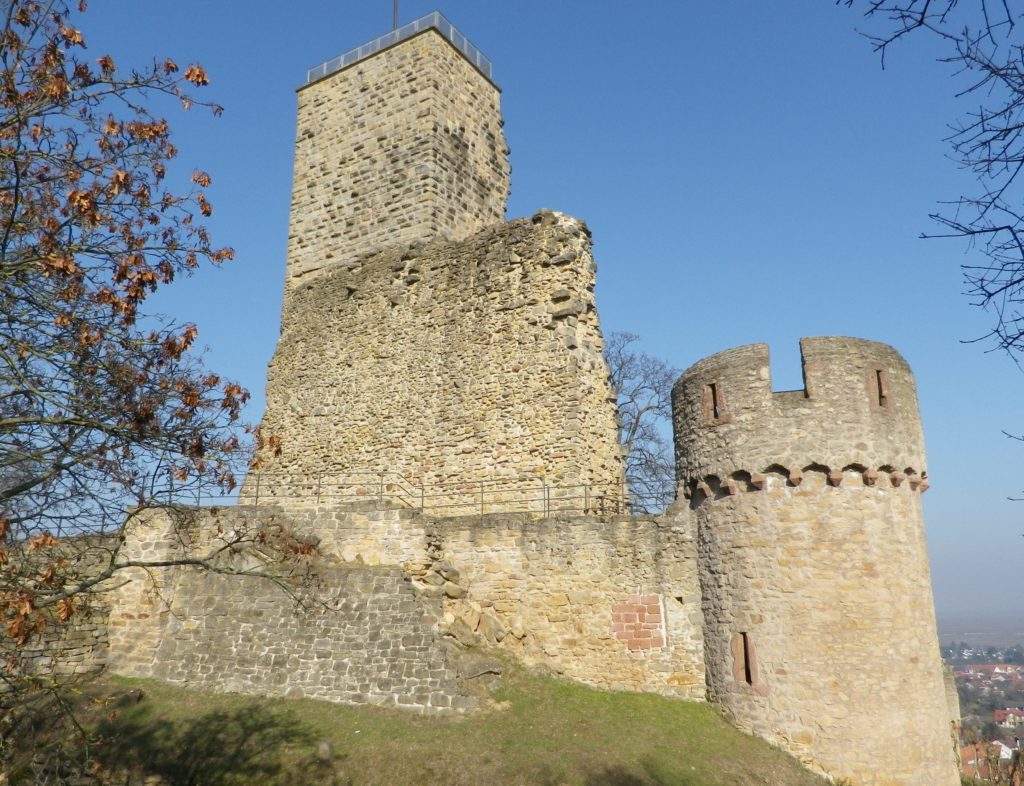
Continuing down steps on the other side of the castle, brought me first to old, abandoned terraces, then uphill to see others. From the heights south of Wachenheim, Forst was partially visible. This town has some well-known vineyards as well. (My personal favorite, purely for its name, is the Ungeheuer, the “Monster”. There must be a story there, but I have yet to uncover it.) The trail passes by Forst’s Pechstein vineyard, before heading back north into Wachenheim between the Goldbaechel and the Rechbaechel vineyards.
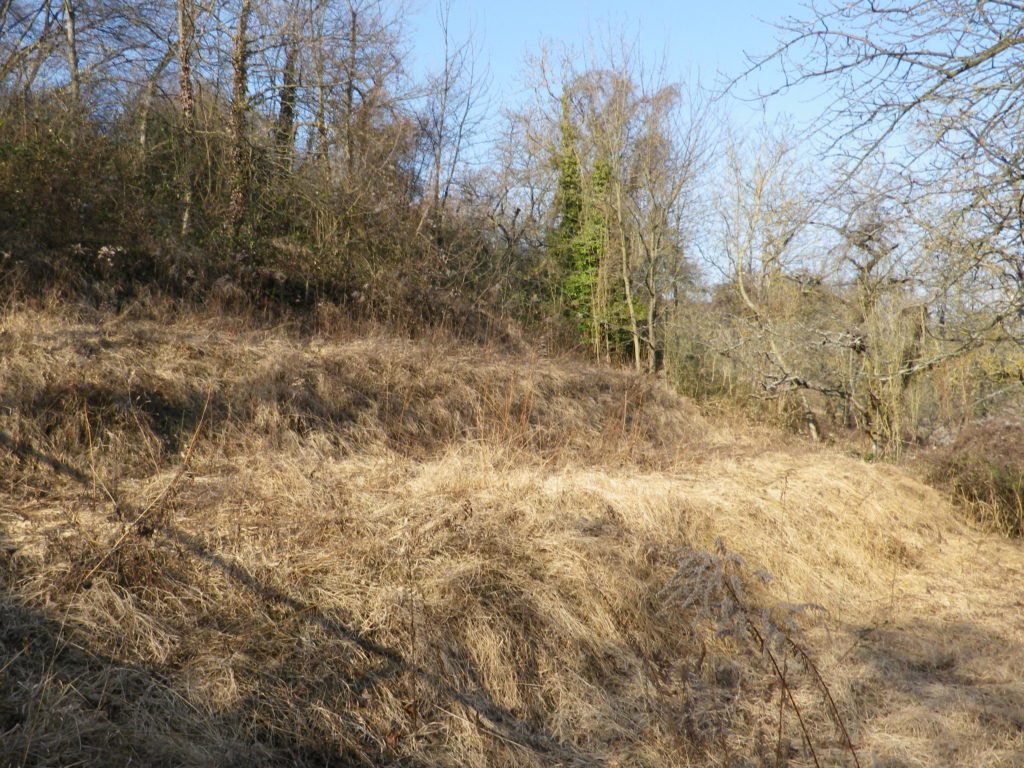
Wachenheim has several well-known wineries, and the first comes right at the town entrance: Villa Wolf. Long a local winery with an impressive, Italianate-style building, it has been acquired and overseen by Ernst Loosen of the Dr. Loosen estates (on the Moselle). The Wachenheim Winzer (a cooperative) was nearby. Then came Schloss Wachenheim, which produces only Sekt, German sparkling wine. Finally, the Dr. Buerklin-Wolf winery is on the north side of town.
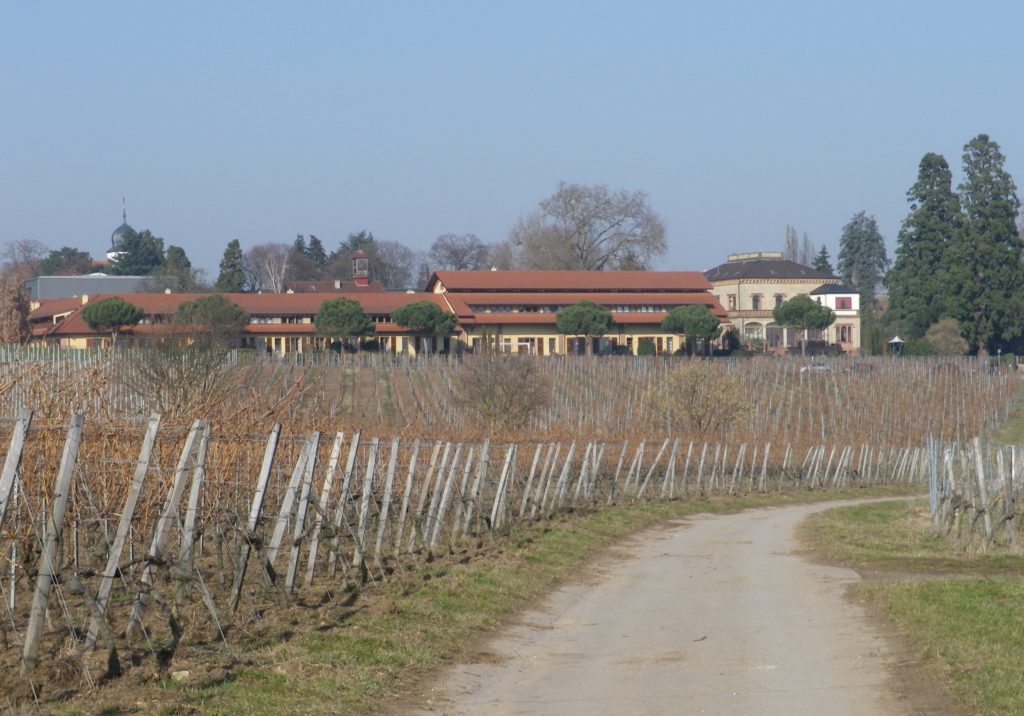
Proceeding from winery to winery was easy, as the wineries are on the trail which follows along the narrow, main street through town. It winds past intriguing side-roads, and is fronted by several elegant buildings from earlier periods. Sections of town wall still exist, and every now and again, there is a dramatic view of the Wachtenburg. From the center of town to its castle, through its vineyards then to its wineries, this town’s trail provides a wonderful, albeit small sampling of the history, the hiking and the wine tasting opportunities of a very atmospheric section of the Deutsche Weinstrasse!
